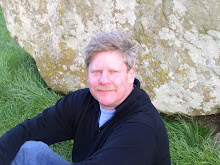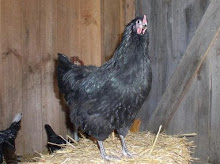I have shared in several previous posts my excitement about an upcoming visit to local Connecticut start-up company, OPTIWIND Corporation. OptiWind manufactures two models of wind turbines slated for small developments, schools, hospitals, municipal buildings and other midsize facilities.
It is important for me to state that I have no interest financially in OptiWind Corporation. I knew no member of the company until my visit and interview of company vice-president of marketing, David Hurwitt, and OptiWind does not sponsor, support, or provide any monies to me or this site.
David and I spoke on the phone and planned to meet around 11:30 Friday. I found the company location easily enough, located not too far off a major Connecticut highway.
The address led me to a red brick building that obviously was a factory and office from better times. I was later told that it was the former headquarters of a large company that was a major employer in the area, manufacturing ball bearings.
I mention this only because I thought of the many older factories and manufacturing facilities across America that could see new life through the promise of alternative energy, green technologies, and American enterprise.
OptiWind is a two year old company, financed by venture capital. A bio of company officers can be found on the web site http://www.optiwind.com/.
I walked into the lobby of the office and was somewhat surprised at the lack of decor. When I say lack, I mean there was not a seat available for me to sit and wait for my appointment and the reception desk was a plastic fold-out table. This surprised me, as I have started companies before and one of the most important things to do is to present a solid and stable front. I felt as though I was in a company clearing out rather then gearing up.
Two employees were in conversation when I entered. I waited until I was acknowledged, which took longer then it should have, and introduced myself as having an appointment with David Hurwitt. I was told he was on a telephone call and would be out in a moment, no chair was offered and the two returned to talking without engaging me in any way. Again being in my own start-up before, anyone that came through my doors was greeted with smiles and attention, offered water, coffee (at the least) and was engaged in conversation with members of my company until their needs were met. I was a bit surprised by this lack of interest in me and apparently no desire to make me feel welcome while waiting.
David, his call finished, came out and introduced himself to me. We shook hands, and he led me to a room off to the side, and generously gave me two hours of his time answering questions and talking about the Optiwind design as it relates to other mid size or large scale wind turbines.
The OptiWind design is not pretty. That said, David Hurwitt, Vice President of Marketing, makes his point quite clearly and in a matter-of-fact way about what the design is. The design is highly efficient and overcomes many of the pitfalls of traditional three blade large turbines.
Direct drive from the turbine assemblies coupled directly to the generator simplifies service and helps reduce noise associated with gearboxes used in other three blade turbine designs.
Using an injection molding process for the turbine blade and hub assemblies also helps to attenuate noise from blade vibrations and the rings supporting the blades provides further stability and noise suppression. The injection molding process also allows a precise design of the turbine fan blade in a single manufacturing process.
The OptiWind tower design and the fact that the blade assemblies are manufactured from composite materials offers significant protection from damages associated with lightning strikes, a common occurance of large wind turbines. As none of the turbine assemblies rise above the tower structure a lightning rod provides proper grounding and is contained in the large center wind "collector".
The turbine assemblies are paired on each side of the center "collector" unit. Each assembly providing roughly 50 kwatts of energy potential. (3 assembly pairs on the 150 kwatt model and 6 pairs on the 300 kwatt design). Wind striking the center "collector" is then pushed through the turbine fan assemblies, working in lower wind speeds then normally required for large turbine blade rotation.
This is one of the selling points of the OptiWind design. OptiWind towers are being marketed to be a viable wind energy technology in urban settings where wind speed is reduced dramatically due to city topography.
However, since there are currently no working models anywhere, I can not really speak for any design or technology features or benefits.
OptiWind had recently been denied a building permit in a local Connecticut town and I wanted to also discuss that. Ultimately the hurdle that the company could not overcome was the question of possible property devaluation and the town council voted to not allow OptiWind to build its tower on land used by the township as a sewage leaching ground. There is currently a cell tower on the property, but community opinion thought the size and design of the OptiWind model would affect property values and that was that. Many in the community seemed to support the need for alternative energy but many also felt that OptiWind did not prove their case for maintaining property values for private properties close to the proposed site.
There also seemed to be a backwash of community resentment because OptiWind took a stand after spending money for experts and attorneys to research possible devaluation of property values, and again applied for permits. OptiWind is convinced that there is no evidence to support the devaluation fears, however they were not able to convince the town council and was again rejected for permits.
OptiWind finally did receive permits to install a tower on private property in another town in Connecticut. OptiWind is teaming up with a local farmer to place a wind tower on his dairy farm to power barns, out-buildings, and the main house with the remainder of the power generated sold back to the grid.
Most permit requirements call for a "fall" zone around any occupied space where the tower might be installed and the minimum amount of land for installation is about two acres or a four hundred foot circle containing the two hundred foot tall by ninty foot wide tower at the epicenter. In the case of the farm, crops can still be planted, as fields do not fall under a occupied space rule.
My tour of the factory floor was uneventful, I saw a warehouse of steel tubing and a partially assembled turbine hub and fan blade.
I thanked David for his time and for being open with me on the issues facing his company.
I was hoping that I would be walking into a company buzzing with energy, enthusiasm, and excitement, on the verge of explosive growth. A company that would offer employment and opportunity to a city that needs new industry and growth.
Although David offered the three "E"'s, (energy, enthusiasm, excitement), as I drove out of their parking lot I was a bit disappointed at the lack of activity and energy I observed, to me something was missing, something solid, something real.
I wish the best of success to David and the crew at OptiWind.
Brett
Sunday, July 12, 2009
Subscribe to:
Post Comments (Atom)










No comments:
Post a Comment